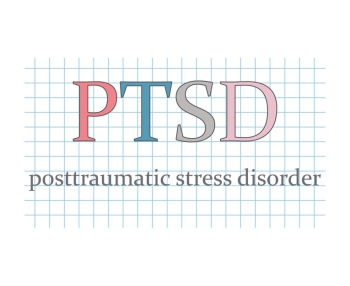
What does PTSD stand for? PTSD stands for Post Traumatic Stress Disorder.
Who gets PTSD?Anyone who has been exposed to trauma could possibly develop PTSD. It is estimated that of people who experience trauma, a quarter of these people will develop full-blown PTSD.
What do you mean by trauma? Any experience in which you believed yourself or a loved one could potentially be seriously harmed or die is trauma. To be diagnosed with PTSD you must have responded to this trauma with great fear, helplessness or horror. Most typically when people think of PTSD they think of military soldiers who have experienced combat trauma. However people can develop PTSD from medical trauma, vehicular trauma, sexual trauma, trauma from natural disasters, etc.
After the trauma I had a few rough days but then was fine. I did not start to experience PTSD like symptoms until months later. What does that mean? You could be experiencing delayed onset PTSD. If you began experiencing PTSD symptoms at least six months after the trauma occurred, you may have delayed onset PTSD. For some people, it is not until a major life change (retirement, birth of a child, moving, etc.) that they begin to experience PTSD. For example, it is not unheard of for police officers that retired to develop PTSD from events that occurred years earlier.
How long do you have to experience PTSD symptoms to be diagnosed with PTSD? It is natural and normal for people to experience PTSD like symptoms after a trauma occurs. If these symptoms go on for three months or longer, you may have PTSD.
What are the symptoms of PTSD? The three major categories of symptoms for PTSD are hyperarousal, intrusion and constriction.
What do you mean by Hyperarousal? Hyperarousal includes the feeling of being on guard and feeling very vigilant about your safety. Startling easily, difficulty concentrating, irritability, experiencing outbursts of anger and trouble sleeping are a part of hyperarousal. Hyperarousal can cause the nerves to be overstimulated and can over time actually change a person’s nervous system due to becoming sensitized from overstimulation. Hyperarousal’s effect on sleep can also be detrimental to mental health because the loss of rapid eye movement sleep affects judgment and mood.
Are flashbacks a part of intrusion symptoms? Intrusion includes flashbacks, which are the experience that you are re-living the traumatic event. However, not everyone with PTSD experiences flashbacks. You may be bothered by images of the trauma as you are trying to go about your daily activities. You may also be bothered by daydreams about the trauma. Nightmares are also considered a form of intrusion. These nightmares are usually repetitive and frightening. Often they include aspects of the traumatic event, or may be symbolic of the traumatic event. Other individuals will experience bizarre or graphic nightmares that do not directly remind them of the traumatic event. For instance, a person who survived a terrible car accident may not have nightmares of the car crash itself, but rather of disfigured people.
What is constriction? Constriction is when a person “numbs” to avoid feelings. In the moment of the trauma, numbness may have been needed to survive the events. Unfortunately if numbness is used as a long-term coping strategy, a person will feel and appear emotionless. A person who is “numbing” may feel detached or uninterested in their life. If you are numbing, you may be uninterested in activities you used to enjoy and generally feel like you do not care about anything. You may also feel as though your future will be shortened or simply cannot imagine yourself in the future. Part of constriction also includes avoidance of people, places or things that remind you of the trauma. You may also realize you cannot remember important parts of the trauma, which is part of constriction.
My body has not felt the same since my trauma. Is this related to PTSD? Yes, it could be. Often individuals with PTSD also suffer from anxiety and depression. Some individuals with PTSD react with extreme guilt and blame which only increases the symptoms of anxiety and depression. In addition, PTSD is often associated with extreme paranoia, which causes an individual to be overly suspicious and very anxious. High levels of anxiety from feelings of paranoia and hypervigilance can cause ulcers and high blood pressure.
Often, the physical reactions you experienced during the trauma will reoccur during times of stress. For instance if during your traumatic experience you experienced a stomachache and pressure in your chest, you will likely experience these same physical symptoms during times of stress. You may begin to notice that where you typically carry stress in your body (in back, neck or shoulders for many people) is more tense and painful. Other people with PTSD may begin to grind their teeth during their sleep and thus may cause dental damage. You should also be aware of the fact that when your body is under tremendous stress, your immune system is not as effective.
People who care about me tell me that I am just not the same person since my trauma. Is that a part of PTSD? Personality change is common with PTSD. Some individuals become very intellectual about their traumatic experience. These people will appear very businesslike and will deny anything is wrong. It is also common for individuals to become chronically distrustful, cynical, angry, irritable and aggressive. Other individuals may become socially withdrawn, perfectionists, dependent or show a decrease in self-esteem.
How long does PTSD last? The length of PTSD varies for each person. While some people may only have PTSD for a few months, others experience PTSD for years. In addition, even after you no longer have full-blow PTSD, certain events that remind you of the trauma or stressful times in your life may cause your PTSD symptoms to reappear briefly. In general people with PTSD from natural disasters recover more quickly than people with PTSD from human inflicted harm.
What should I do if I think I have PTSD? A good first step is to seek help from a mental health counselor who is familiar with trauma and PTSD. It is also important that you coordinate care between your mental health counselor and your primary care doctor. If your doctor is aware of your PTSD diagnosis, he or she may be able to better treat your physical symptoms of PTSD. It is also especially important to coordinate care with your primary care doctor to make sure you are being treated for any physical injuries you sustained during the trauma. Healing from trauma is a process, which is different for each individual based on his or her traumatic experience, specific PTSD symptoms, social supports and personality. Seeking from help from a mental health counselor is a good first step to begin your healing journey.
To speak with a live therapist call at 215-922-5683 Ext. 100 or if you prefer quietly setting yourself up for an appointment, you can self schedule an inperson or virtual therapy appointment. For your convenience we have 5 physical offices and provide virtual therapy services in Florida, Georgia, Pennsylvania, New Jersey, New Mexico and Virginia.
Ocean City Therapy Office
360 West Ave, Floor 1, Ocean City, NJ 08226Mechanicsville Therapy Office
9044 Mann Drive, Mechanicsville Virginia, 23116Society Hill Therapy Office
233 S. 6th Street, C-33, Philadelphia PA 19106Art Museum / Fairmount Therapy Office
2401 Pennsylvania Ave, Suite 1a2, Philadelphia PA 19130Santa Fe Therapy Office, 2204 B Brothers Road, Santa Fe, New Mexico, 87505
Telemedicine: We have therapists who are licensed to work in Florida, Georgia, New Jersey, Virginia New Mexico and Pennsylvania
You deserve the best therapist possible. Our special sauce for helping you achieve your goal, begins with matching you with the right therapist. Check out our GUARANTEE.
Therapy Services Offered:
Individual Counseling and therapy
Couples Counseling and marriage counseling
Teen Therapy and Adolescent Therapy and tweens and child counseling
Family Therapy and multi-generational counseling
Art Therapy and Counseling no art skills needed
ADHD Therapyand ADD, Dyslexia, Autism, Tourettes counseling
Anxiety, Panic, OCD Therapy and worry and fear support
Breaking the cycle of Codependency and being your own person
Overcoming Chronic Illness and Chronic Pain
Depression Therapy and sadness, gloom, and upset support
Grief Therapy and loss, End of A Relationship, rejections, pregnancy loss and therapy
Mindfulness Based Therapy and spirituality based therapy
Sex Therapy and sexual function & dysfunction, sex addiction, sexual orientation and gender identity support
Shame and Blame
Trauma Therapy both emotional and sexual abuse, complex trauma, PTSD counseling
Divorce support
Affairs, Infidelity, Unfaithful, Cheating counseling
Parenting therapy
Personality disorder treatments
Anger Management Therapy
Setting Boundaries and identifying ones own Core Beliefs
Just name some of the Mental Health issues that we work with. Our goal is to help you Change and Achieve Your Dreams





















